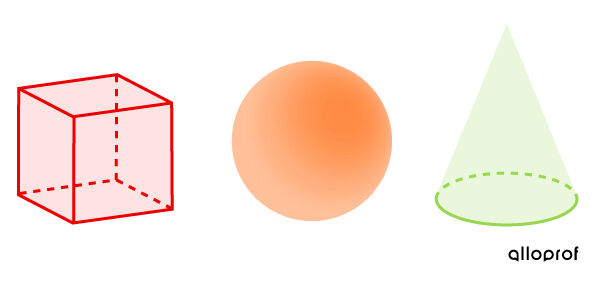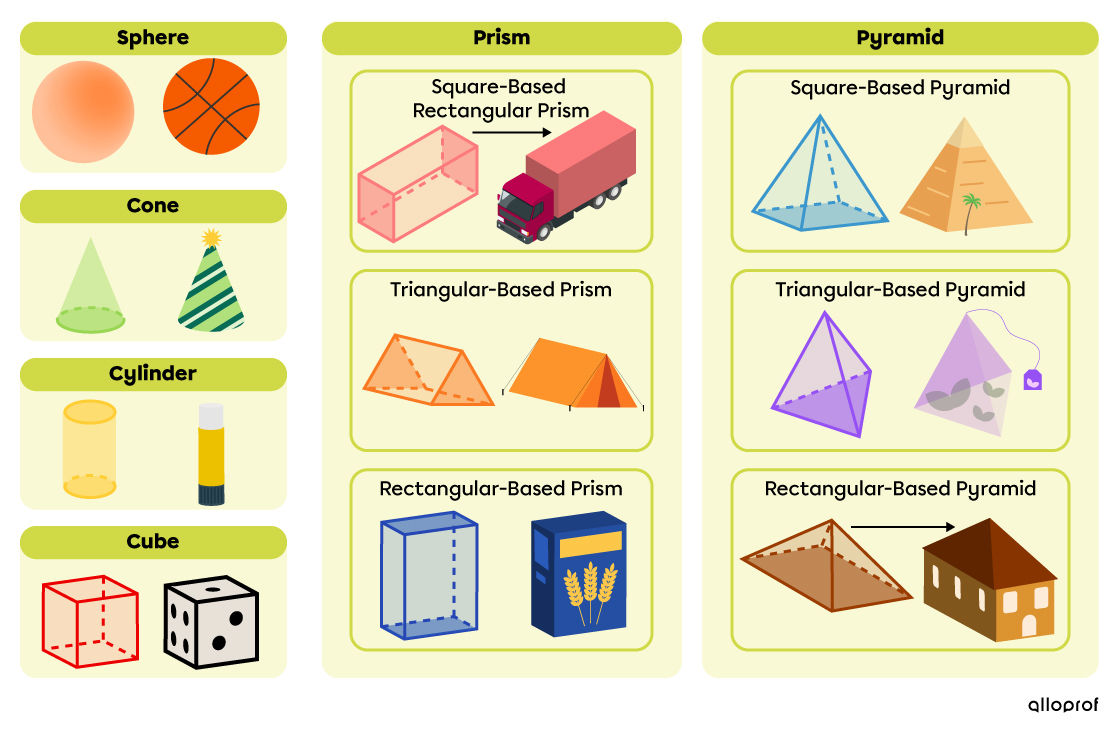A solid is an object with one or more curved or plane (flat) surfaces. It can be held, gripped or even rolled around.
To learn about plane (flat) and curved surfaces, read the concept sheet Faces, Edges and Vertices.
A cube, a sphere, and a cone are solids.

The different faces of a solid can have the shape of plane figures.
To learn about plane figures, read the Plane Figures concept sheet.
The square-based pyramid is made up of plane figures: a square and triangles.

The main solids are: spheres, cones, cylinders, cubes, prisms, and pyramids.
You can compare everyday objects in your environment to the different types of solids.

There are two main categories of solids: curved bodies and polyhedrons.
Curved bodies are solids that have at least one curved surface.
Polyhedrons can be prisms or pyramids. They only have plane surfaces.
To learn more about prisms or pyramids, read the Prisms and Pyramids concept sheet.

There are two main categories of solids: curved bodies and polyhedrons.
Among the polyhedrons, there are convex polyhedrons (prisms and pyramids) and non-convex polyhedrons.
To learn more about polyhedrons, read the Polyhedrons concept sheet.
